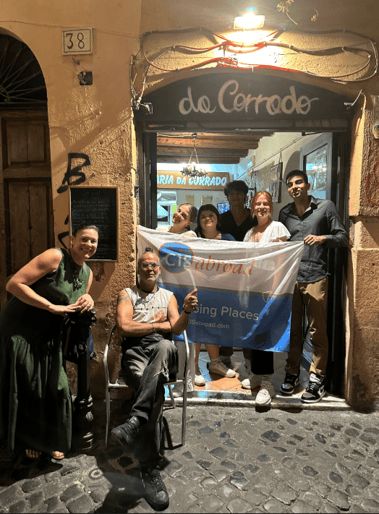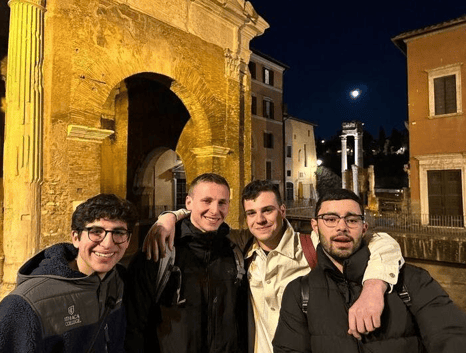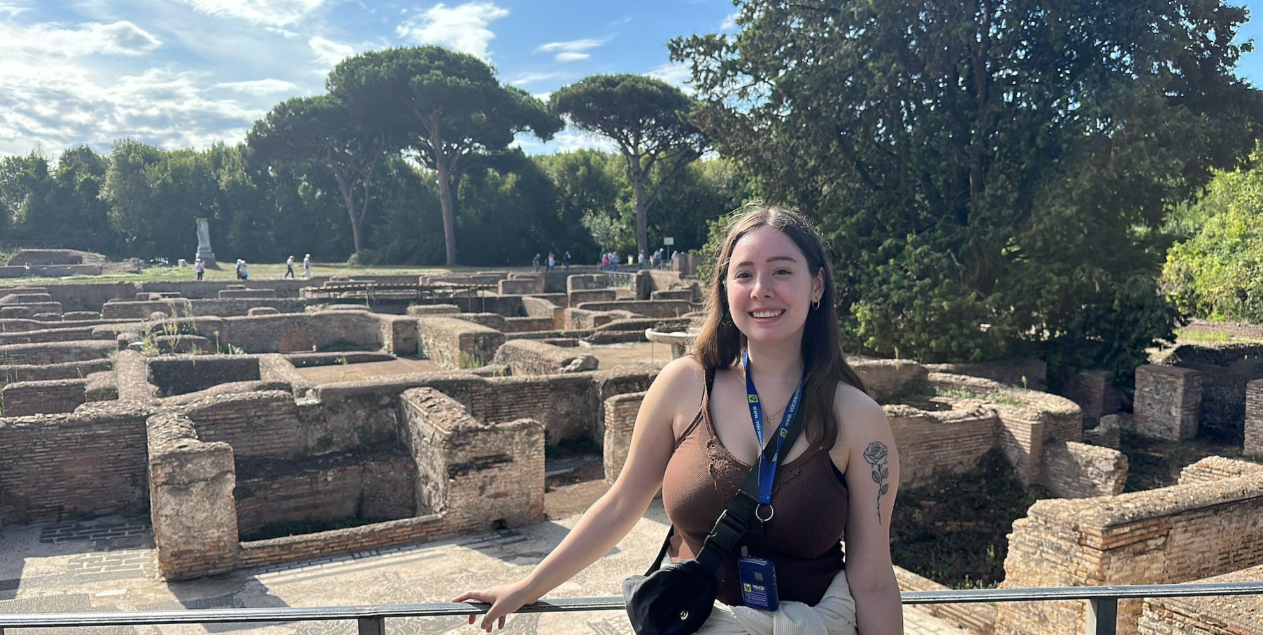Trastevere Food Tour
Students tour the Trastevere neighborhood with a special culinary guide who will show them all the hot spots where they can get quick bites to eat from local restaurants that might not be receiving the attention they deserve on social media sites like Trip Advisor or Tik Tok! They will also explain traditional ways of grocery shopping stopping at a couple unique small grocers that specialize in selling products such as aged cheese and procured meats. Sometimes we will end the evening with a cooking class to help students learn to cook local cuisine during their semester.

Tour + Apertivo in Jewish Ghetto
We will take a guided historical tour in the Jewish Ghetto, a historic and picturesque neighborhood, where we discuss the history of oppressed people and reflect on how liberty, social justice and civic duty have been experienced during different periods of the city's story. Students also learn about the traditions of the Roman Jewish community, tour the synagogue and finish the evening with a group aperitivo to discuss healthy drinking habits.

Roman Baths/Spa Night
Students will spend an evening at the spa in honor of Roman bathing tradition. In ancient Rome, communal bathing was an integral part of life for both social and hygienic purposes. The Romans considered the ritual of bathing to denote the superiority of their culture as they considered themselves to be cleaner and more sophisticated than other societies. Their skill at channeling water sources from one location to another using the aqueducts and their ability to make use of natural water resources, such as hot springs, allowed them to create some very sophisticated complexes dedicated to hot and cold baths, steam rooms and even natural saunas. Most Roman baths include the following:
-
Apodyterium: A changing room with lockers for clothes where bathers would prepare
-
Laconicum and Sudatoria: Dry and wet sauna style rooms
-
Destrictorium: A room where visitors were oiled before entering the rooms of varying temperatures below
-
Caldarium: A hot room with high humidity and a plunge bath
-
Tepidarium: A medium heat room with a lukewarm bath for transitioning between hot and cold rooms
-
Frigidarium: A cold room, often with a large pool
-
Palaestra: A light exercise area
Today you can visit the some of the ruins of ancient Roman baths in Rome and you can also find hotels all over Italy that offer modern spa experiences modeled after this ancient Roman tradition. In fact, there are many locations around the country that still make use of the natural thermal waters and hot springs to offer a very authentic experience with the water that, according to the Romans, have natural healing properties.
To simulate this experience and give our students a chance to both cool of and calm down during the heat of the term, we will go to QC Terme which is one of the largest and closest spa hotels near Rome. The location has almost all of the features listed above and is located in an area that is close to where one of the ancient Roman emperors built their own private summer home with bathing facilities included.
Ostia Antica
Let's explore the ancient port of the Roman Empire! Ostia Antica, which was one of the most important port cities, is one of the most interesting and relatively well-preserved set of ancient ruins close to Rome. Visiting what remains of this once bustling community can help students understand what life was like in ancient Rome. Tile mosaics and ancient frescos still visible on the floors and walls of Ostia Antica help explain where people lived, ate, bathed and convened for social or political gatherings. With the help of an expert tour guide, students will look at was has and has not changed in Roman culture since the ancient times. You might be surprised to find how many modern traditions were already common place happenings under the rule of the Roman Empire.





